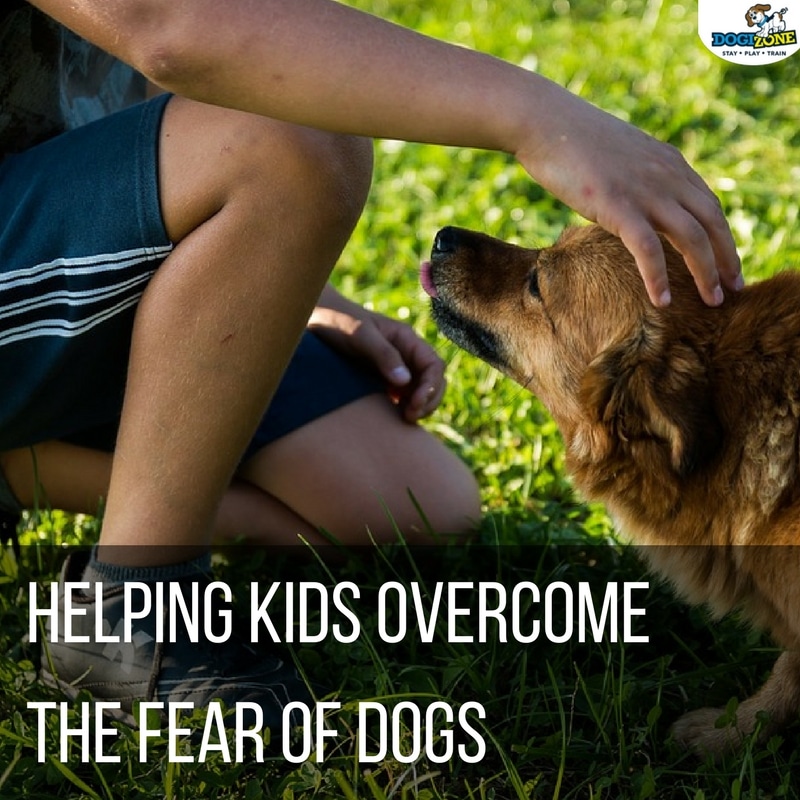Helping Kids Overcome The Fear Of Dogs

In general, there are three reasons why kids have a fear of dogs. The most common are that the child doesn’t have exposure to dogs in the family. With this type of child, they are afraid of dogs because of their lack of experience. This is often compounded by stories, movies and television shows that focus on aggressive or attack types of dogs that may influence how a child feels.
The second reason and one that is also common is that the child is actually neutral about their feelings about canines because they have had no experience with dogs. However, the parents are negative about dogs, or they are fearful of canines or animals around their children. In this way, the child actually picks up on Mom and/or Dad’s fear and becomes fearful of dogs.
The third option is that the child has had a negative or traumatic experience with a dog. This doesn’t mean the child was bitten by a dog, although that can be a cause of fear, it may simply mean the child was frightened by a loud or aggressive dog or a dog that looked scary.
Desensitization
The key to helping kids get over a fear of dogs is to gradually expose them to positive experiences with a gentle, well-behaved and non-threatening type of pet. This may start out by going to a friend or family member’s house with this type of dog and having the child watch the dog play with the owner when the child is in the house, and the dog and owner are outside.
The next step may be to take the child outside with the dog and the owner, but not force or stress interaction between the child and dog. Talk to the child about the dog and have the owner speak to the child as well. The key is to avoid forcing the child and dog to have physical proximity or presence until the child is comfortable.
Most kids are going to want to get to meet the dog after a few visits and seeing and hearing positives. When this happens, have the owner leash and control the dog, allowing the child to feel safe and secure in initiating the contact with the dog.
It is important to avoid any potential threatening issues such as the dog jumping up on the child or a dog that gets overly exuberant in a greeting. Also, avoid any dogs that are shy or nervous around new people as this can result in a negative first interaction.
As the child becomes more comfortable, allow more freedom with the dog and the child in a supervised setting. When the child is in control of the interaction they are often more confident and will increasingly feel safe and positive towards spending time with the pet.
